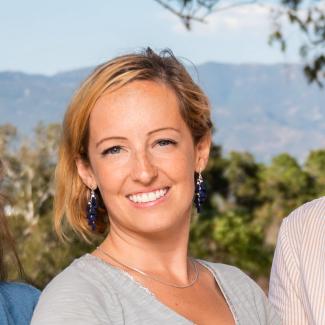We reveal the geometric signatures of natural and artificial intelligence.
Understanding the brain is one of greatest scientific challenges of our time. We still don't know how thoughts emerge from neural activity, how our memories are stored and retrieved, or how our brain so flexibly adapts to new situations.
Meanwhile, today, an equally profound challenge has arisen: understanding the artificial intelligence (AI) emerging in machines of our own making.
In our lab, we believe that these challenges are linked.
Geometric Intelligence Research
We are physicists, neuroscientists, mathematicians and computer scientists who study intelligence in biological and artificial neural networks and use our findings to build better AI models.
Just as physics unified forces through symmetry and geometry, we show mathematically and empirically that human and machine intelligence can be studied under a common framework: geometric intelligence.
Geometric Intelligence in Machines
We study the mathematical properties of top-performing AI models. Using these properties, we design novel AI that succeeds where most models fail—delivering up to +66% higher accuracy or the same accuracy with 10× faster models—even when datasets are small, noisy, or complex (e.g., networks, and 3D shapes). Learn more.
Geometric Intelligence in Brains
We study how geometric patterns of neural activity obey mathematical principles across diverse cognitive functions—from navigation and memory to vision. Learn more.
Building Brain Digital Twins
We leverage shared mathematical principles of intelligence in brains and machines to build multiscale digital twins of the brain, simulating its function in both health and disease. Learn more.
Latest News
Nina Miolane Receives the Prestigious NSF CAREER Award
Nina Miolane, PI of the Geometric Intelligence Lab, receives the NSF CAREER award, the most prestigious NSF award for early-career faculty to develop geometric methods for natural and artificial intelligence.
Read MoreNina Miolane Receives the Prestigious NSF CAREER AwardThe Geometric Intelligence Lab Receives a 1.2M$ NSF Grant to Build Vision Systems that Exploit the Symmetries of the Visual World
Led by lab members Christian Shewmake and Sophia Sanborn, the Geometric Intelligence Lab (PI: Nina Miolane) receives a 1.2M$ NSF grant to build deep vision models capable of discove
Read MoreThe Geometric Intelligence Lab Receives a 1.2M$ NSF Grant to Build Vision Systems that Exploit the Symmetries of the Visual WorldSophia Sanborn is on the TWIML AI Podcast with Sam Charrington
Sophia Sanborn, postdoctoral fellow in our Lab, is featured in the renowned TWIML AI Podcast with Sam Charrington.
Watch her discuss why deep networks and brains learn similar features here!
Read MoreSophia Sanborn is on the TWIML AI Podcast with Sam Charrington





